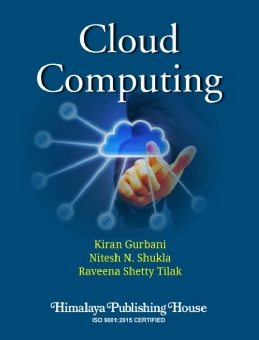It is great pleasure for presenting First Edition of Revised syllabus of this Book “Cloud Computing” to the students of B.Sc. (CS). This book is written to cover all the topics of syllabus prescribed by the University of Mumbai for T.Y.B.Sc. (CS).
Cloud Computing is an emerging discipline which is changing the way corporate computing is and will be done in the future. The National Institute of Standards and Technology (NIST) defines cloud computing as a “model for enabling convenient, on-demand network access to a shared pool of configurable computing resources (e.g., networks, servers, storage, applications, and services) that can be rapidly provisioned and released with minimal management effort or service provider interaction”.
Cloud computing is the latest advancement of computing, where IT resources are offered as services. The hardware and software systems that manage these services are mentioned to as Infrastructure as a Service (IaaS) and Platform as a Service (PaaS), while actual application managed and delivered by IaaS and PaaS are referred to as Software as a Service (SaaS). The combination of virtualization, IaaS, and PaaS holds the potential to revolutionize software application (SaaS) life cycle management.
If Cloud computing is properly applied within an overall IT strategy, it can help Small and Medium Business Enterprises and governments to lower their IT costs, by taking advantage of economies of scale and automated IT operations, while at the same time optimizing investment in in-house computing infrastructure. The benefit of such an environment is efficiency and flexibility, through creation of a more dynamic computing enterprise, where the supported functionalities are no longer fixed or locked to the underlying infrastructure.
The goal of this book is to give a complete overview of the advanced of this developing research area, which many consider to be the next platform for provisioning and distributing, IaaS, PaaS and SaaS applications in various computing domains.
This book includes all the related topics with a variety of example which is understandable to students.
This book is organized in 3 units.
Unit – I covers Introduction of cloud computing, types of cloud and services and benefits of cloud computing and also it covers introduction about WEB 2.0, Parallel and Distributed computing.
Unit – II covers Virtualization with its feature and taxonomy. It covers introduction about free and Open Source KVM and oVirt Management tool and also covers some challenges of cloud computing.
Unit – III covers about the OpenStackCloud computing. This also covers create, manage and deploying OpenStack in production environment and also explain automation process using orchestrator in OpenStack.
This book also covers all the University practicals with proper example.
Contents –
Unit – I
1. Cloud Computing
Unit – II
2. Virtualization
Unit – III
3. Introduction to OpenStack
Cloud Computing Practicals






